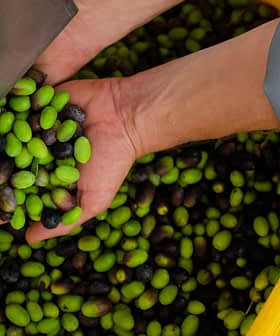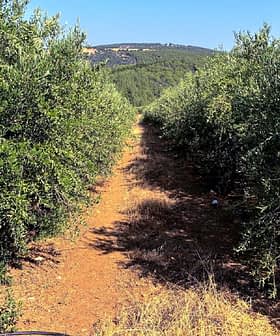Turkey Receives PDO for Edremit Olive Oil
Nearly 10 million olive trees fall into the new Protected Designation of Origin-certified region in northwestern Anatolia.
 View of Edrtemit Bay from Kaz mountain, Balikesir, Turkey
View of Edrtemit Bay from Kaz mountain, Balikesir, Turkey Edremit olive oil from Turkey has received a Protected Designation of Origin (PDO) certification from the European Union.
The Turkish olive oil was added to the E.U.’s geographical indications (GIs) register on July 20th under the name ‘Edremit Zeytinyağı.’ The application was submitted to the European Commission in July 2021, and no statement of opposition was filed with the commission.
The commission specified that Edremit Zeytinyağı is extra virgin olive oil produced from Edremit olives in the western Turkish districts of Edremit and Havran of the Balikesir province, in an area known as the Gulf of Edremit. The PDO region is home to around 9.8 million olive trees, representing 6.2 percent of all the olive trees cultivated in Turkey.
See Also:Signs Suggest a Weak Harvest in TurkeyThe PDO label formally certifies that the quality and characteristics of the Edremit olive oil are due to the particular geographical location.
Ahmet Çetin, the president of the Edremit Chamber of Commerce, the institution that applied to the commission to register the Edremit Zeytinyağı, said that the area boasts a long tradition in olive growing.
“Olive trees have been cultivated in the Gulf of Edremit for at least 2,000 years,” Çetin told Olive Oil Times. “Therefore, the Gulf of Edremit, with its historical background, has become one of the exemplary places in Turkey where olives and olive products, as well as olive culture, come to the fore and integrate.”
Çetin also summarized the factors that have combined to shape the distinctive qualities of the local Edremit olives.
“The soil structure of the region, the climatic features, especially the northern winds of Ida Mountains and the wind blowing from Madra Mountain, the endemic plant richness of the region, are blended with the oxygen of the Imbat wind blowing from the sea, revealing the characteristic structure of the olive fruit,” he said.
“As a result of the research carried out by the European Commission, It has been confirmed that Edremit olive oil is unique and different from other olive oils in terms of sensory and characteristic features of the olive variety,” Çetin added.
“We can say that the geographical indication is a quality mark taken to protect this geography, history, product and variety,” he continued.
Edremit Zeytinyağı is the second Turkish olive oil to receive a geographical indication status from the E.U. after Milas extra virgin olive oil entered the registry in 2020. Milas olive oil is produced from olives of the Memecik variety grown in Turkey’s Milas region.
The E.U.‘s geographical indications scheme, introduced in 1992, aims to promote and legally protect food products’ names and distinctive qualities with a specific link to their geographical origin in all member states.
The GI recognition enables consumers to trust and distinguish quality products while helping producers market their products better.
Non-European product names can register as GIs through a bilateral or regional agreement between their country of origin and the European Union that includes the mutual protection of such terms.








